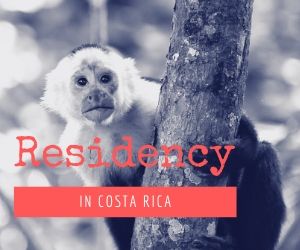For anyone who was thinking that Nicaragua is the place beware. This article reinforces some of the warning in this thread about Nicaragua. It is not, at least at this time, a very stable country and I do not think it is a wise investment situation.
Quote:
Mortars, stones injure his son
Street rioters attack President Bolaños in Nicaragua
Special to A.M. Costa Rica
(posted at 1:30 p.m.)
Protesters attacked President Enrique Bolaños and his staff Tuesday with stones, water bags and homemade mortars when the chief executive left Casa Presidencial in an effort to speak to those in the street demonstration.
The president was not hurt but his son, also Enrique Bolaños, was hospitalized.
The protestors were in a massive march ostensibly against a rise in bus fares, but the crisis has become one against the current administration. Officials in the Bolaños administration say the street protests are encouraged by the Frente Sandinista opposition.
Protesters Tuesday told Bolaños to leave office.
The attack took place not far from Casa Presidencial.
Earlier story below.
_________________________
Special to A.M. Costa Rica
MANAGUA, Nicaragua — Four police officers were injured and more than 40 persons were arrested in efforts to contain violence in student protests over increases in bus fares here. More seems to be likely for today with the announcement that a massive march would take place.
Some observers said that the Nicaraguan president might declare a state of emergency. The protests are at least encouraged by his political opponents.
Amongst the injured was Gabriel Sanchez, a 28-year-old police officer who lost his eye when a homemade mortar shell exploded close to his face, and Francisco Solorzano, a member of the police anti-riot squad who was hit in the chest by a "morterazo" blast.
Although the protests were generally limited to public university transportation centers and the area in front of the Managua city hall, transportation in the entire capital was chaotic as police diverted vehicles from the center of Managua. No protests were seen outside of Managua. In tourist center Granada, it was business as usual.
A hard line against the protestors, which was announced over the weekend by the newly appointed Managua chief of police, Carlos Bendana, was evident as police officers fired tear gas and rubber bullets against the protestors. Unconfirmed stories by Sandinista controlled Radio YA, claimed that the police officers were using AK-47 military rifles and shotguns against the crowds. Radio YA is the unofficial voice of the Frente Sandinista.
During the protests of the past week the students used homemade mortars against the police and civilians without law enforcement retaliation. In the fighting Monday, a much more determined effort was made by special police anti-riot squads and students were forced to retreat to the campuses of the universities in the face of tear gas and constant arrests on the streets.
Early in the day four buses and three government vehicles were stopped and burned by the rioters using molotov cocktails and other incendiary devices. Public transportation virtually ground to a halt in afternoon hours as bus and taxi services retreated from the streets for fear of retribution by the students.
On the North Highway, close to the Sandino International Airport, students at UNAG University forced 30,000 Zona Franca textile employees to find alternative means of transport as public transportation was stopped and many workers were forced to return
home on foot. Television stations ran live coverage of the protests in the late afternoon as reporters dodged stones and rubber bullets to provide images of the riots.
In the live reports, announcers pleaded with the students to remain calm and stop the violence after a reporter was injured during the coverage.
Late in the evening students and various union workers represented by the Frente National de Trabajadores, a Sandinista-dominated labor organization announced the massive march to the National Assembly and the Casa Presidencial.
It is to begin at the cluster of universities located adjacent to the MetroCentro shopping Mall. No police permit had been applied for by last night to authorize the march.
At 3 p.m. the Nicaraguan government called an emergency press conference to address the growing crisis. In the conference, Lindolfo Monjarrez, presidential press secretary, directly blamed the Frente Sandinista and in particular its leader, Daniel Ortega, for instigating the violence.
Monjarrez also blamed Dionisio Marenco, the newly elected Sandinista mayor of Managua for providing material aid and assistance to the protestors, up to and including the use of city vehicles and equipment. Earlier in the day Marenco and the Nicaraguan Association of Mayors (AMUNIC) had called for the resignation of President Enrique Bolaños for his alleged incapacity in resolving the riots in Managua and his lack of concern for the students and citizens of Managua.
Surprisingly, Bolaños did not appear at the press conference, and no personal comments have been made by the Nicaraguan president. It is an open topic of discussion that the government is contemplating a declaration of national emergency and a call for military intervention by the Nicaraguan army to stop the crisis.
In the event a state of emergency is called by Bolaños, it is widely speculated that he would attempt to dissolve or restrict the authority of the legislative and judicial branches of the government. The Supreme Court and the National Assembly have been in constant opposition to the Bolaños government for the last two years.
For example, the National Assembly recently enacted reforms to the Nicaraguan Constitution restricting presidential power and cutting by 50 per cent all of the salaries of the Presidency, including the personal presidential staff and the salary of the sitting president, as well as the salaries of all of the cabinet ministers appointed by Bolaños.
Go home HERE! Go to second newspage HERE!
Go to third newspage HERE!
_________________

Pura Vida

Only Irish coffee provides in a single glass all four
essential food groups:
alcohol, caffeine, sugar and fat.
Alex Levine











